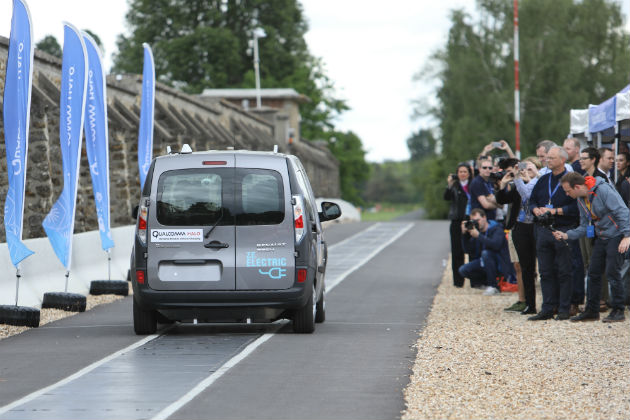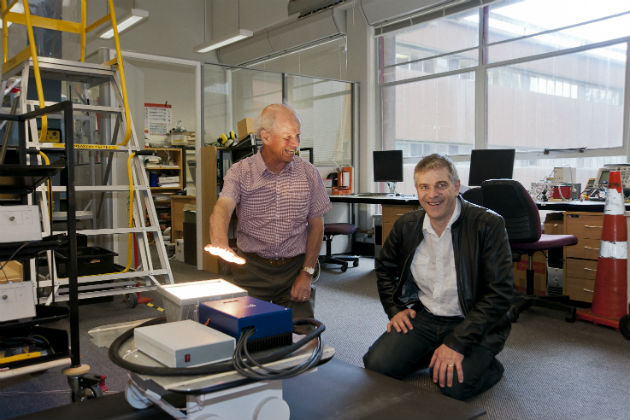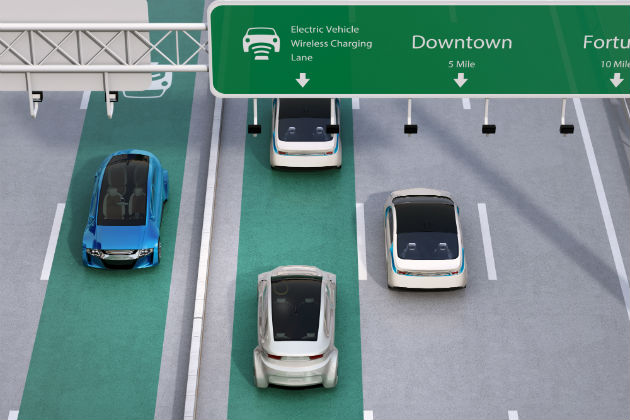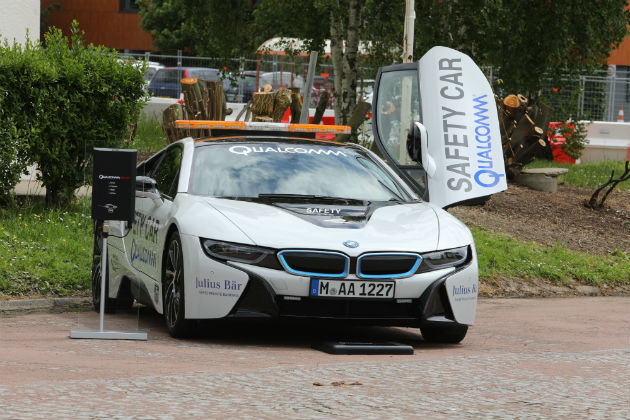4 September, 2017 By: Courtney Pearson
We can charge phones and toothbrushes without using any wires, so why can’t we do the same with our cars?
That’s the question that’s being explored by countries from South Korea to Britain where trials are running to test wireless charging in roads – in effect, a road that would charge your EV as you drive.
Imagine - the further you drive, the further you can go because instead of running out of petrol, your electric car is being charged by the road.
It sounds like fantasy but the introduction of this kind of technology is becoming reality and giving new meaning to the term ‘electric highway’.

European countries, South Korea, the UK, and New Zealand are all on board with testing it out.
University of Auckland Professor Grant Covic from the Department of Electrical and Computer Engineering says roads that can charge cars is a logical progression.
"We live in a world where we expect to be connected, and we expect to be mobile. The natural evolution is for electric vehicles to be connected and mobile. Wireless power transfer is the only way to do that.
Australia may not be embracing this technology just yet, but there are many roads around the world that are proving that this could be the future for electric vehicles.
Powered-up highways
Wireless charging for your car is much more complicated than a phone or a toothbrush.
South Korea is a pioneer of wireless charging for electric vehicles with two electric buses on a 24km route between the main railway station and the CBD of Gumi since 2013. The batteries are one-third the size of those in your average electric vehicle, due to the continuous charging.
The UK began a £500 million five-year trial to test in-road wireless technology. The project was paused until at least 2018 to allow an urban roads trial to be completed, then will look into trials that simulate motorway conditions.
Enjoying this article?
Sign up to our monthly enews
However one of the more interesting trials is from our Kiwi neighbours at the University of Auckland where Covic and his team have spent around 25 years researching using magnetic fields to recharge cars when stationary.
The idea is simple – install a wireless transformer underneath the vehicle, which automatically charges once parked stationary over a wireless transformer on the ground.

“Having first succeeded with applications which required only a small gap [between the primary and secondary wireless transformers], we started to think broader and solve the challenge of private vehicle charging, which requires more tolerance,” says Covic.
“We spoke to car manufacturers in the mid-2000s [about the possibility of wireless charging] and they said they’ve been there, done that, and it’ll never happen in their lifetime.
“Two years later they said it’s a no-brainer.”
Having partnered with technology firm Qualcomm, the University of Auckland is now working to meet the requirements of car manufacturers and international standards committees.
“We want to get this technology to the point where it’s no more costly than a plug-in system,” he says.
Once they've figured out how to move forward with stationary charging, charging as you drive is the next step.

Back at home
Main Roads WA principal analyst for strategic planning Steve Atkinson says the approach in WA is to learn from other countries before jumping in.
Our state’s unique challenges, including size and the availability of electricity in rural areas, are all question marks.
“The space is developing really rapidly,” he says. “We’re trying to figure out where electric charging for our roads makes sense.”
Australia’s slow take-up of electric vehicles, as well as rapidly evolving battery technology, means that our vehicle infrastructure needs aren’t yet decided, says Atkinson, with higher levels of point-to-point charging the first focus.
“There are also options that could make more sense like induction charging around traffic lights.“If you’ve got someone parked at the traffic lights, the fact that they’re parked there for a period of time might be better than putting it everywhere across the network in the metropolitan area.
“If there was a case where the electric road fits a need, we’ll look at it moving forward," he says
Meanwhile, back in NZ, Covic says the increased take-up of electric vehicles over the next five years will spur further development with charging technology, morphing from stationary charging to full-blown highways.
“Once people get used to wireless charging systems and find that it’s easy, they’re going to demand more stationary wireless charging places around the city and then they’re going to start looking for dynamic charging,” he says.
“If you can do it in New Zealand, you can do it anywhere.”

An electric vehicle parked on top of a wireless charging pad - an example of stationary charging
Enjoy this story? Get more of the same delivered to your inbox. Sign up to For the Better eNews.
Save more at the fuel pump, every time.
RAC members get 4 cents per litre off fuel at 78 service stations around WA. Get your discount at participating Puma Energy, Better Choice, Gull and Peak service stations.
RAC's Electric Highway®
We believe EVs are the answer to creating a more sustainable future. To make it easier for those who choose to go electric, we launched the RAC Electric Highway®, giving you a network of trusted charging stations that will get you from Perth to Augusta and back.
